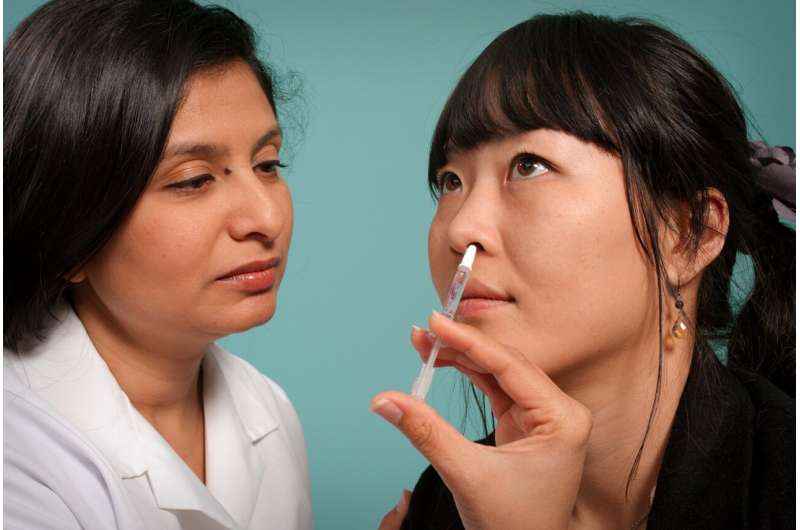July 29, 2021 report
AstraZeneca COVID-19 vaccine reduces viral shedding when administered intranasally

A team of researchers affiliated with multiple institutions in the U.S. and one in the U.K. has found that administering the AstraZeneca COVID-19 vaccine intranasally to infected hamsters and monkeys reduced viral loads in nasal swabs, suggesting reduced shedding. In their paper published in the journal Science Translational Medicine, the group describes testing they conducted with animals infected with COVID-19 and the possible implications of their work.
Many parts of the world where vaccinations against COVID-19 are widely available are currently experiencing another surge. Experts in the field suggest this is due to the arrival of new variants and wide resistance to the vaccinations. Meanwhile, the media has been reporting on so-called breakthrough infections, in which people who have been vaccinated become infected with the virus anyway. Together, the new developments have led to calls for mask-wearing, even for people who have been vaccinated. This is because it is not yet clear if vaccinated people can infect other people, even if they have no symptoms. In this new effort, the researchers suggest that adding intranasal inoculation to vaccination efforts might help.
Currently, the vast majority of vaccines developed and in use are intramuscular, given via shots in the arm. Recently, a team at the University of Alabama noted that vaccines given intranasally would seem to make more sense, since COVID-19 is a disease of the nose, throat and lungs. In this new study, the researchers have given an already existing COVID-19 vaccine intranasally to test animals with COVID-19 to see what would happen.
They found that administering intranasal AstraZeneca COVID-19 vaccine to infected hamsters and monkeys led to lowered viral loads on nasal swabs—an indication that giving the vaccine intranasally reduces shedding, which describes viruses released into the air when an infected person breathes, coughs or sneezes. Less shedding makes it more difficult for the virus to spread to other people.
Unfortunately, prior research has also shown that vaccines given intranasally confer immunity for a shorter period of time than intramuscular vaccination. Thus, as the team in Alabama noted, the best approach might turn out to be a combination of a shot in the arm along with a puff of mist up the nose to confer both short-term and long-term protection.
More information: Neeltje van Doremalen et al, Intranasal ChAdOx1 nCoV-19/AZD1222 vaccination reduces viral shedding after SARS-CoV-2 D614G challenge in preclinical models, Science Translational Medicine (2021). DOI: 10.1126/scitranslmed.abh0755
© 2021 Science X Network




















